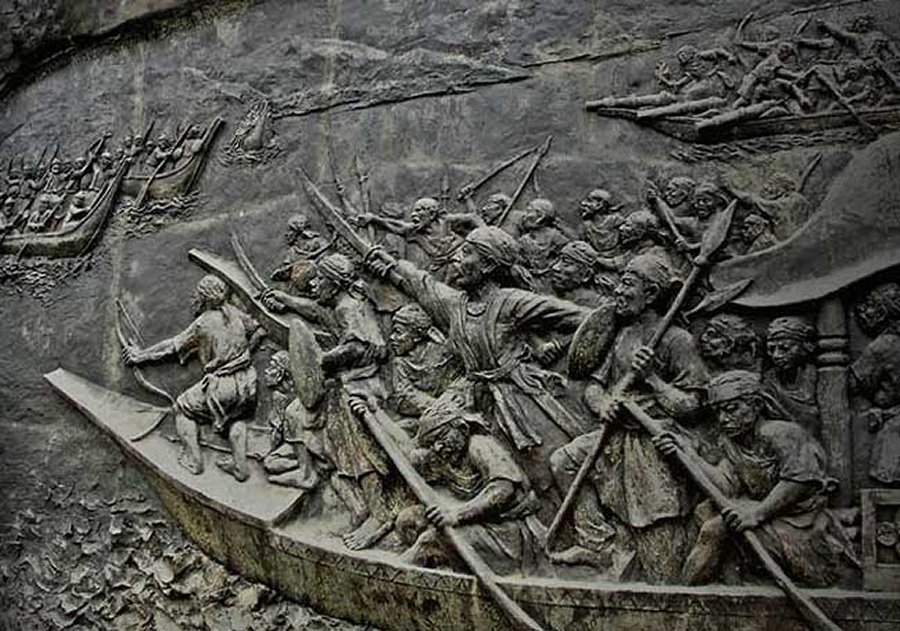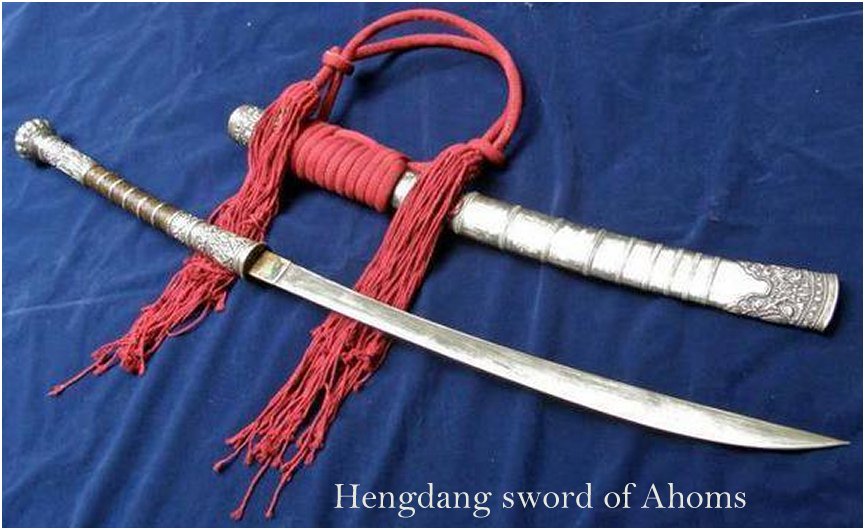Lachit Bhorphukan: Hero From Assam Among Famous Warriors Who Stopped Mughals From Conquering Northeast India
A. Sutherland - AncientPages.com - Lachit Bhorphukan was a great warrior from Assam, where he was a commander of the army of the Ahom Kingdom. Lachit bravely defeated the powerful Mughal Army, using some of the riskiest strategies, ever.
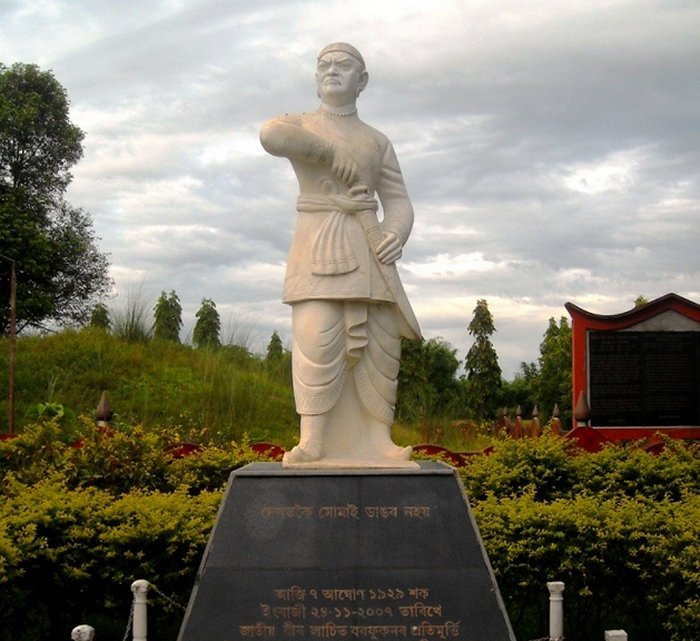
His name became particularly famous when Lachit Bhorphukan recovered Gauhati, the largest city of Assam and Northeastern India, from the Mughals in 1667 and was presented with the Hengdang, a single-edged gold (silver or wood) plated sword. Image source
In the mid-1600s, the Mughal Empire was at the peak of its glory and extended over large parts of the Indian subcontinent and Afghanistan; it was the second largest to have existed in the Indian subcontinent, covering an impressive area of 4 million square kilometers, after the Maurya Empire, which spanned 5 million square kilometers.
A great military leader of medieval India and son of commander-in-Chief of Ahom forces, Lachit was educated in Hindu, Indian scripture, military skills, and other disciplines necessary for him as a nobleman.
From his father, Lachit had inherited involvement, a sense of duty, and loyalty. He was now occupied with the preparations for the war.
The Mughals’ force and pacification dominated over a large part of India and in consequence, the country began to experience a series of revolutions and uprisings.
Now it was time to liberate Guwahati from Mughal-occupation. Lachit Bhorphukan was selected to lead the forces of the Kingdom of Ahom to liberate Guwahati from the Mughal occupation.
He raised the army and preparations were completed by the summer of 1667. He knew the enemy and he knew that his army had no chance to fight on the plains. He chose the forested and hilly terrain just outside Guwahati, as his battlefield, where his men had an advantage over the Mughals.
It was still time to made strategic preparations to the battle that took place on Brahmaputra River, near Saraighat, Guwahati. At the crucial moment in this decisive battle, the Mughals’ army was about to land at Andharubali, where Lachit had his headquarters.
He immediately sent orders to all the land and naval forces to attack. He also ordered his boats to be prepared for him and forced himself from the sickbed and on to the boats, (at that time he was very ill). He firmly stated that regardless of what happens, he will never desert his country. His war-boats immediately headed toward the naval battle and along with all Ahom warships smashed into the Mughal warships.
The Mughal admiral was killed and the Mughals suffered the loss of three top-ranking officers and about 4000 dead.
Guwahati, of which history and myths go back several thousands of years, was recovered by Lachit, who successfully defended it against the Mughal forces.
The day of the decisive battle - one of the worst defeats the Mughal Army would ever face - is not known for certain, only that it happened in the middle of March 1671.
The battle would be remembered for the victory of a much smaller Ahom army over the mighty Mughal Army, through a combination of tactical brilliance, guerilla warfare, and intelligence gathering.
Lachit Borphukan was among many other brave kings and generals who managed to keep the North East of India free. The victory in Saraighat Battle immortalized the brave warrior who was presented with the Hengdang, a single-edged gold plated sword.
However, Lachit Borphukan never recovered from his illness and died a year later in April 1672.
Written by – A. Sutherland AncientPages.com Staff Writer
Copyright © AncientPages.com All rights reserved. This material may not be published, broadcast, rewritten or redistributed in whole or part without the express written permission of AncientPages.com
Expand for referencesMore From Ancient Pages
-
 Brochs: Ingeniously Engineered Windowless Iron Age Structures Of Atlantic Scotland
Featured Stories | Sep 20, 2023
Brochs: Ingeniously Engineered Windowless Iron Age Structures Of Atlantic Scotland
Featured Stories | Sep 20, 2023 -
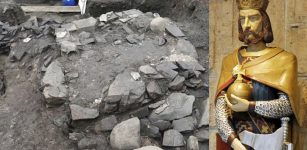 Is A Viking Settlement And An Even Older Church Hidden Under St. Clement’s Church In Norway?
Archaeology | Apr 13, 2017
Is A Viking Settlement And An Even Older Church Hidden Under St. Clement’s Church In Norway?
Archaeology | Apr 13, 2017 -
 Archaeologists Focus On Greek Poet Aratus’ Memorial Tomb And Ruins Of Soli Pompeiopolis
Archaeology | Aug 12, 2020
Archaeologists Focus On Greek Poet Aratus’ Memorial Tomb And Ruins Of Soli Pompeiopolis
Archaeology | Aug 12, 2020 -
 Ancient Pathogens Released From Melting Ice Could Wreak Havoc On The World – New Analysis Reveals
Featured Stories | Aug 2, 2023
Ancient Pathogens Released From Melting Ice Could Wreak Havoc On The World – New Analysis Reveals
Featured Stories | Aug 2, 2023 -
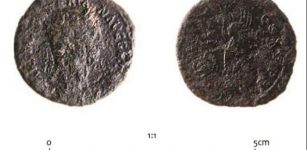 Hoard Of Roman Bronze Coins Turns Out To Be Offering For Safe Crossing
Archaeology | Jul 2, 2021
Hoard Of Roman Bronze Coins Turns Out To Be Offering For Safe Crossing
Archaeology | Jul 2, 2021 -
 Vikings Brewed Beer With Heated Stones – Old Tradition Popular In Germany, Finland And Baltic States
Archaeology | Dec 14, 2017
Vikings Brewed Beer With Heated Stones – Old Tradition Popular In Germany, Finland And Baltic States
Archaeology | Dec 14, 2017 -
 Magnificent Hochdorf Chieftain’s Grave – Resting Place Of The Celtic Tutankhamun
Featured Stories | Aug 19, 2019
Magnificent Hochdorf Chieftain’s Grave – Resting Place Of The Celtic Tutankhamun
Featured Stories | Aug 19, 2019 -
 Ancient Desert Mystery – Did Thousands Vanish Without A Trace Because Of An Ominous Prophecy And Revenge?
Featured Stories | Nov 28, 2022
Ancient Desert Mystery – Did Thousands Vanish Without A Trace Because Of An Ominous Prophecy And Revenge?
Featured Stories | Nov 28, 2022 -
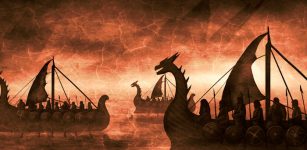 The Fierce Great Heathen Army And The Invasion Of East Anglia
Featured Stories | Aug 8, 2022
The Fierce Great Heathen Army And The Invasion Of East Anglia
Featured Stories | Aug 8, 2022 -
 1.3-Million-Year-Old Stone Age Axe Discovered In Morocco Pushes Back The Start Sate Of Acheulian Technology In North Africa
Archaeology | Jul 30, 2021
1.3-Million-Year-Old Stone Age Axe Discovered In Morocco Pushes Back The Start Sate Of Acheulian Technology In North Africa
Archaeology | Jul 30, 2021 -
 New Last Ice Age Findings In Palawan Cave
Archaeology | Sep 19, 2022
New Last Ice Age Findings In Palawan Cave
Archaeology | Sep 19, 2022 -
 Mystery Of The Boxgrave Humans – Fossils In The UK Reveal How Ancient Europeans Were Connected
Archaeology | Nov 15, 2022
Mystery Of The Boxgrave Humans – Fossils In The UK Reveal How Ancient Europeans Were Connected
Archaeology | Nov 15, 2022 -
 Leprechaun: One Of The Most Famous And Powerful Creatures Of The Irish Faerie Folk
Celtic Mythology | May 8, 2016
Leprechaun: One Of The Most Famous And Powerful Creatures Of The Irish Faerie Folk
Celtic Mythology | May 8, 2016 -
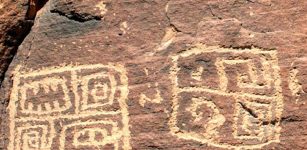 Controversial Evidence – Ancient Chinese Visited America 2,500 Years Ago
Civilizations | May 9, 2015
Controversial Evidence – Ancient Chinese Visited America 2,500 Years Ago
Civilizations | May 9, 2015 -
 Secrets Of Benjamin Franklin’s Paper Money Deciphered By Scientists
Archaeology | Jul 18, 2023
Secrets Of Benjamin Franklin’s Paper Money Deciphered By Scientists
Archaeology | Jul 18, 2023 -
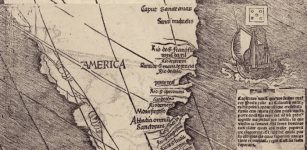 On This Day In History: The Name Of America Used For The First Time On World Map – On Apr 25, 1507
News | Apr 25, 2016
On This Day In History: The Name Of America Used For The First Time On World Map – On Apr 25, 1507
News | Apr 25, 2016 -
 Nanna: Mesopotamian Moon God, Lord Of Wisdom And Father Of The Gods
Featured Stories | Apr 1, 2017
Nanna: Mesopotamian Moon God, Lord Of Wisdom And Father Of The Gods
Featured Stories | Apr 1, 2017 -
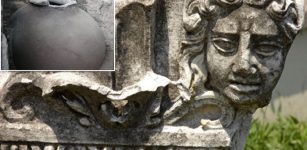 Huge Phitos (Jar) Unearthed In Ancient City Of Prusias ad Hypium, Turkey
Archaeology | Jun 26, 2022
Huge Phitos (Jar) Unearthed In Ancient City Of Prusias ad Hypium, Turkey
Archaeology | Jun 26, 2022 -
 Sun: Highest Cosmic Power Worshiped By Ancient People And Represented By Deities
Featured Stories | Apr 1, 2019
Sun: Highest Cosmic Power Worshiped By Ancient People And Represented By Deities
Featured Stories | Apr 1, 2019 -
 Monumental Totem Poles Of Native American People Tell Stories Of Ancestors
Featured Stories | May 22, 2017
Monumental Totem Poles Of Native American People Tell Stories Of Ancestors
Featured Stories | May 22, 2017

